The idea of being a self-reflective practictioner was popularized by Donald Schoen in the 1980s and has continued to be utilized by areas such as education and the social sciences to the present. To be a self-reflective is to continually examine practice in an endeavor to adjust, improve or adapt to the present circumstances as well as contually draw from and add to past learning. According to Brookfield (2015), Schoen described two types of reflection…reflection-on-action and reflcction-in-action. The first type of reflection is that reflection that occurs after the fact. The second type of reflection occurs in the moment and impacts how we are able to respond. It is sometimes referred to as “thinking on one’s feet” and should be intentional, creative and generally involves some degree of risk. Both aspects of reflection should be developed. Consider adding some of the following questions to guide your self-reflection.
Guidelines for Self-Reflection:
In the Oregon State University Science and Math Education (SMED) licensure handbook (2014), the following guidelines for reflection are listed. The following are suggestions of questions to consider in your reflections.
Analysis of the Lesson
This is not a blow by blow description of the lesson. Rather you should provide specific evidence to support claims that you are making about the lesson itself:
- Was the timing appropriate?
- Did the activities align with your objectives?
- What were the particular benefits and drawbacks of the methods you chose?
- Would a different method have been better (i.e., a lab rather than a demonstration)?
- Did you have enough questions?
- Were the questions at the appropriate level?
- What would you do differently and why? Clarify both how you would do this lesson differently but also on changes that you will be making in future lessons.
Evidence of student learning
As you are teaching your lesson, you will be constantly assessing the students’ progress. Your reflection is the opportunity to summarize and analyze what you were considering about students during the lessons. Some examples of questions you might consider are:
- Do you have specific concerns about their progress?
- Were the students engaged and motivated?
- What happened in the lesson that seemed to motivate students to be engaged in the lesson?
- Which students were actively engaged and which ones had disengaged?
- What can you do to engage the students more, and to more appropriately meet student needs?
- What do your students understand as a result of your lesson? What evidence do you have for this claim?
Reflect on the student learning, identifying specific situations and your reaction to those situations. Choose two or three students (including both males and females) to focus on for each lesson and then reflect more deeply on their progress in the class and in the lesson. In your reflection describe your developing perception on these students as learners in the class and what kinds of strategies work for them in particular.
Implications for Future Lessons
Consider alternatives:
- Are there other ways you might consider structuring this lesson in the future?
- Are there other strategies or resources that you could have used to support student learning?
- What evidence suggested this change?
Based on your observations of students’ participation in class and written work;
- What will you do next?
- Did things come up that will change what you do tomorrow or later in the unit?
- Are there topics on which you need to spend more (or less) time?
- What else has today’s lesson made you think about regarding your teaching?
Reflections Scoring Guide:
A –Reflections demonstrate analytic thinking, self-awareness, and an honest self-evaluation of teaching. Claims about teaching and learning are clearly supported by evidence.
B – Reflections attempt an honest self-evaluation of teaching but may be lacking in depth. Provides some evidence for claims made about teaching and learning.
C –Reflections do not demonstrate self-awareness or an honest self-evaluation of teaching. Lacks evidence for claims about teaching and learning.
Refecting on feedback:
When reflecting on the feedback you receive from students, peers and mentors in either a solicited or unsolicited (voluntary observations or comments made by your student, for example) manner, the following questions, from the The Instructional Skills Workshop (ISW) Handbook Part Two: Workbook (2018), may help inspire and guide your thoughts:
- Based upon what the learners said, what would you say was the most important feedback about: (i) the strengths of the lesson? and (ii)areas of improvement?
- What was the biggest surprise?
- What are the implications for your next lesson/class?
- What was the most treasured piece of feedback about your strengths as an instructor that you received? Why?
- How might you build on this or other strengths in your teaching?
- What feedback still feels rather challenging or puzzling to you?
- Can you think of other comparable situations in your teaching that might provide insight into this issue? (ISW, p. 2.44-45)
Reflections after Class:
After each class that you teach, take a few moments to reflect on what happened. Consider some of the questions identified in the general guidelines section above. This can be done in whatever manner works best for you, like in your office after class or on your walk/commute home. It will be most effective if it is used to inform the planning for your next class.
Journal Writing:
Consider keeping a journal to record or document your personal reflections on your teaching as well as reflecting on any feedback you receive on your teaching. You may want separate journals for each course/tutorial/lab that you teach and/or separate sections, including separate sections for reflections on feedback. Journals are very personal so organize them in whatever way will work best for you. Also consider your own personal needs when deciding how often to write in your journal. You may choose to write in it every single day or perhaps more sporadic. Just make sure that it becomes a habit to write in your journal when important observations are made, either by you, your students or observers and when important occurrences happen.
Checklist:
Create a checklist for yourself on all aspects of teaching that you would like to emulate. Consider your personal goals in teaching when creating the criteria as well as the particular aspects you would ask an observer to pay attention to. You may decide to create one checklist to serve multiple purposes, i.e. for your own personal evaluation/reflections and to be used by your peer/mentor observers when providing you with feedback on your teaching.
Year-end Reflections:
The following questions might help you evaluate and reflect on your teaching:
- How effective were your skills and methods as an instructor?
- How well organized/prepared was the course?
Taking time at the end of your course to reflect on your teaching as well as the design of your course will not only benefit your teaching and the course, but will also save you time and energy planning in the future if you teach this course again.
References:
Brookfield, S. D. (2015). The skillful teacher: On technique, trust and responsiveness in the classroom. San Francisco:Jossey-Bass.
ISW International Advisory Committee (2018). The Instructional Skills Workshop (ISW) Handbook Part Two: Workbook [Beta]. Vancouver: ISW International Advisory Committee.
Oregon State University. ((2014). SMED licensure handbook. Retrieved from http://blogs.oregonstate.edu/smehandbook/part-time-student-teaching/reflections-guidelines/
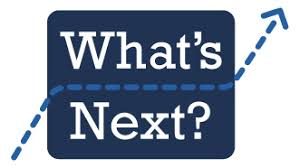 Not quite a year ago I spotted a job advertisement for a local college. It mentioned the PIDP as a recommended pre-requisite for the job (or acquiring it once hired). “Hmmm…I wonder what that is?”, and discovered that it was a program offered at Vancouver Community College. “Interesting”, was my response. Then, about two weeks later, I spotted a “Technology in Teaching” course offered at Thompson Rivers University in the fall. It mentioned that the course would transfer to the PIDP program. Little did I realize how much those two events would impact the next year of my life!
Not quite a year ago I spotted a job advertisement for a local college. It mentioned the PIDP as a recommended pre-requisite for the job (or acquiring it once hired). “Hmmm…I wonder what that is?”, and discovered that it was a program offered at Vancouver Community College. “Interesting”, was my response. Then, about two weeks later, I spotted a “Technology in Teaching” course offered at Thompson Rivers University in the fall. It mentioned that the course would transfer to the PIDP program. Little did I realize how much those two events would impact the next year of my life!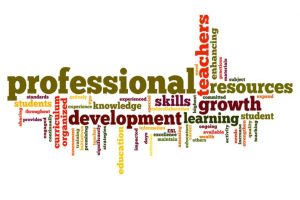
 ent area of clinical practice) include writing the new Canadian Nurses Association certification for pedicatrics as well as completing the online immunization course offered through the Provincial Health Services Authority on the Learning Hub.
ent area of clinical practice) include writing the new Canadian Nurses Association certification for pedicatrics as well as completing the online immunization course offered through the Provincial Health Services Authority on the Learning Hub.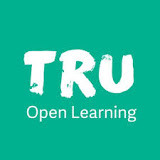 In relation to professional development for teaching, I will continue to attend the annual professional development conference at Thompson Rivers University – Open Learning (TRU-OL). I also intend to continue accessing programs through the TRU Centre for Teaching and Learning (CELT). One workshop which caught my eye was called Liberating Structures. As well, I would like to pursue the Facilitator Development Workshop for the ISW.
In relation to professional development for teaching, I will continue to attend the annual professional development conference at Thompson Rivers University – Open Learning (TRU-OL). I also intend to continue accessing programs through the TRU Centre for Teaching and Learning (CELT). One workshop which caught my eye was called Liberating Structures. As well, I would like to pursue the Facilitator Development Workshop for the ISW.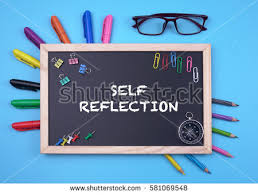

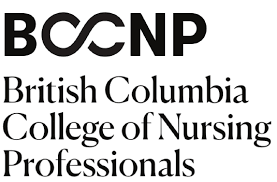
 For registered nurses in BC, self and peer assessment is the basis for the
For registered nurses in BC, self and peer assessment is the basis for the 
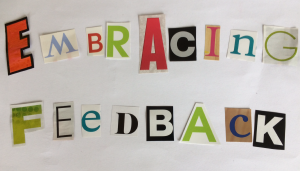
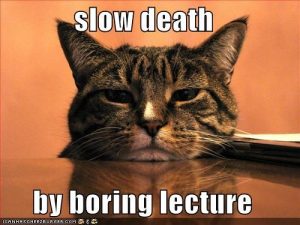 Does the term lecturing creatively sound like an oxymoron? For many of us, the thought of a traditional lecture generally brings to mind images of sleeping students, however that does not need to be the case. Read on to find out what Brookfield (2015) suggests in Chapter 6 of his book The Skillful Teacher.
Does the term lecturing creatively sound like an oxymoron? For many of us, the thought of a traditional lecture generally brings to mind images of sleeping students, however that does not need to be the case. Read on to find out what Brookfield (2015) suggests in Chapter 6 of his book The Skillful Teacher.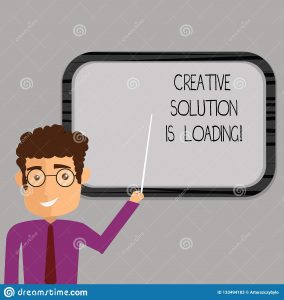
 Thoughtfully considering what approach is best for a specific topic is key and then implementing some of these strategies will help students get the most out of this approach.
Thoughtfully considering what approach is best for a specific topic is key and then implementing some of these strategies will help students get the most out of this approach. As instructors, we often dread the process of obtaining end of course feedback, and question its validity, particularly when there is a poor response rate. As well, there is no opportunity to respond to student feedback. This is why getting ongoing feedback is essential to meet student needs and improve our teaching.
As instructors, we often dread the process of obtaining end of course feedback, and question its validity, particularly when there is a poor response rate. As well, there is no opportunity to respond to student feedback. This is why getting ongoing feedback is essential to meet student needs and improve our teaching. The Teaching Commons @ York provides a number of good resources for instructors. Check out their link:
The Teaching Commons @ York provides a number of good resources for instructors. Check out their link: 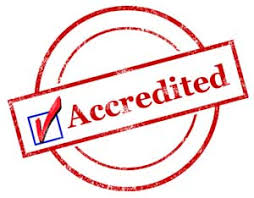
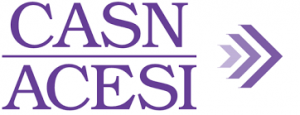
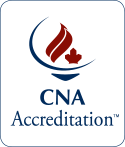
 Nursing students perform tests on a electronic mannequin that can be programmed to exhibit a range of symptoms.
Nursing students perform tests on a electronic mannequin that can be programmed to exhibit a range of symptoms.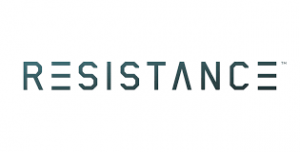
 e viscerally what so many of your students are going through” (Brookfield, 2015, p. 214).
e viscerally what so many of your students are going through” (Brookfield, 2015, p. 214). Some of the characteristics of justifiable power and authority which students have identified include: transparency, responsiveness and being consistently fair. As a nurse who worked in hospital management prior to transitioning to nursing education, I was “taught” the importance of these characteristics by my more senior staff, who had no difficulty calling me out any time they
Some of the characteristics of justifiable power and authority which students have identified include: transparency, responsiveness and being consistently fair. As a nurse who worked in hospital management prior to transitioning to nursing education, I was “taught” the importance of these characteristics by my more senior staff, who had no difficulty calling me out any time they